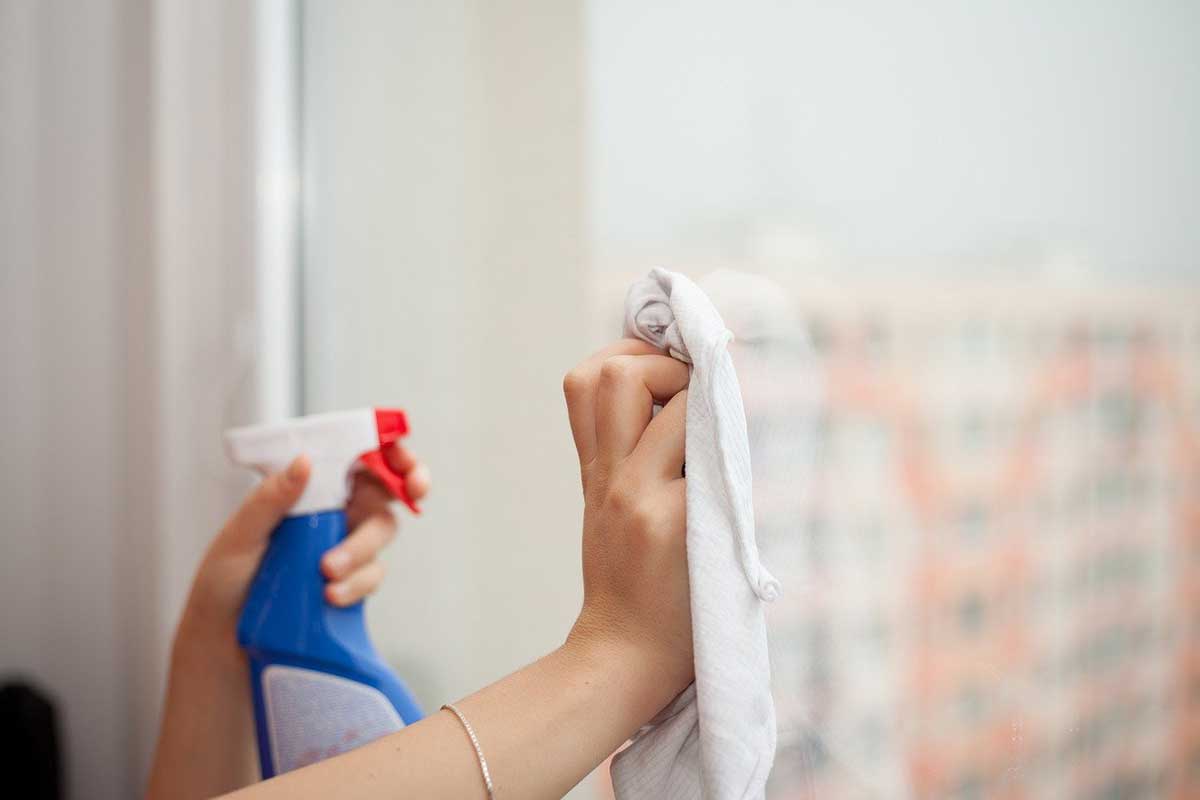This page may contain affiliate links. If you click and buy, we might get a small commission at no cost to you.
Wanting clean windows that look spotless is natural. It allows more light to come in and lets you look outside without anything blocking your view. However, we all know that cleaning glass windows can come with issues of leaving streak marks and dust behind.
Don’t worry! It is possible to have streak-free windows with the proper methods. To help you clean efficiently, here are 10 tips on how to clean your windows without streaks using Windex.
How to clean windows without streaks using windex
To cover your bases for different window cleaning scenarios, here are 10 tips to get your windows looking spotless and streak-free.
1. Use the right cleaning cloth
Paper towels can end up leaving grime behind and causing streaks when you clean your windows. You’ll definitely want to avoid extra-absorbent towels and choose untreated varieties instead.
However, for the best results, use a microfiber cloth, lint-free towels, or squeegees. They have better properties for attracting and trapping dirt that can cause streaks when left behind. If you’re on a budget, you can try newspaper but it doesn’t hold well to moisture from your Windex cleaner.
2. Wash your cleaning cloth properly
If you are using lint-free towels or microfiber cloths, make sure not to add fabric softener to your laundry load before you use it for window cleaning. The fabric softener can leave a film on the glass surface you are cleaning and prevent you from getting a streak-free sparkle.
3. Avoid hot days
If it’s hot out and the surface of your window is hot, it can lead to more streaks due to the evaporation rate of the Windex. When the cleaner liquid evaporates quicker, it can leave behind residue that appears as streaks on your window. So make sure to plan to clean on an overcast day or at a time when the sun isn’t scorching down.
4. Try a vacuum cleaner
If your window is very dusty and filled with small dirt particles, you can prepare the surface first with a vacuum cleaner. Use a small handheld vacuum to run over your window, including the cracks and corners, to pick up all the excess dust and dirt that can cause streaks when you clean with Windex.
5. Clean the window frames first
For similar reasons to the above tip, you want to clean your window frames first before tackling the actual glass. Dirt and grime can accumulate easily on frames and be dragged onto the window during the cleaning process. Make sure to loosen any cobwebs and get into the edges and crevices of the frame. A soft paintbrush can usually do the trick for getting into these tight spaces.
6. Scrape away sticky substances
If you have sticky substances clinging to your window, you’ll want to scrape them off before you clean to prevent smears and streaks. Use a piece of plastic, such as a paint scraper, to scrape off the substance.
Don’t use metal to scrape as you can end up scratching the surface of your window. For tough substances, try spraying it with a little window cleaner first, letting it sit, and then scraping it off.
7. Start from the top
When cleaning your glass windows, it’s always best to start at the top. By working your way down, you can wipe up any cleaner drips. It also lets you clean away any grime or dust that gets dislodged and floats down to stick to the window below. Starting at the top makes the whole process easier and more efficient.
8. Adopt the right squeegee technique
If you are using a squeegee to clean your windows, you want to use the right techniques for a streak-free result. Start by cleaning a narrow strip of glass on one side corner from top to bottom. This makes it easier for you to clean the entire window with horizontal strokes. Then:
- Press the squeegee blade against the glass in the upper corner and steadily pull across the window horizontally
- Wipe the squeegee with a clean towel to remove excess water and dirt
- Clean another horizontal stroke by overlapping the previous stroke around 2 inches
- Repeat until done and wipe off excess water at the edges with a clean cloth
9. Don’t spray directly at the window
When using a microfiber cloth, try spraying the Windex directly on the cloth instead of directly onto the window. This method can prevent you from using more products than you need, making you less likely to leave behind streaks.
It also prevents cleaner drippings from damaging the wood frames of your windows over time. While it might take some more time continuously spraying the cloth, the final results can be worth the extra effort.
10. Buff out the streaks
Sometimes even using all the tips above your window might have some streaks left behind. As the last step of your cleaning process, buff out the streaks by swiping a dry cloth over them.
Use fast, light strokes over the span of the window and you’ll find the streaks disappear quickly. Also, make sure the cloth you choose is lint-free, very dry, and clean.



